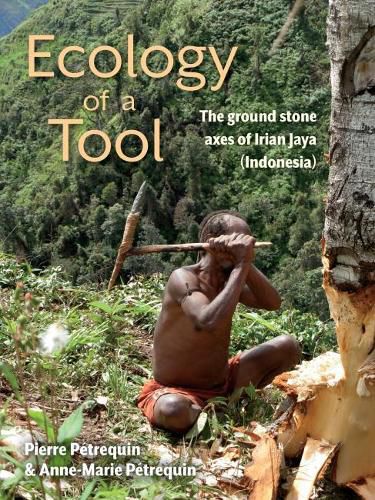Readings Newsletter
Become a Readings Member to make your shopping experience even easier.
Sign in or sign up for free!
You’re not far away from qualifying for FREE standard shipping within Australia
You’ve qualified for FREE standard shipping within Australia
The cart is loading…






New Guinea, and especially Papua New Guinea, is the last country in the world where ethnologists were able to closely observe, film and photograph the whole manufacturing chaines operatoires of polished stone felling tools, from quarry extraction to finished tool use. Research on the polished blades of PNG has evolved over the years, following changing philosophies and research agendas. While it is clear that an exceptional sum of information has been gathered, it remains centered on that small part of the Highlands where conditions for field research were more pleasant than elsewhere. Our presentation of Irian Jaya axes therefore tackles a topic that remains mostly unexplored. Until now, stone tool research in New Guinea has followed an anthropocentric approach, in which tools are seen more as vectors for social exchanges than as means of acting on the environment.
This monograph will take a different approach. Here, polished stone blades are placed at the center of the world, between, on one side, the transformed natural environment, and, on the other, the social and economic environment. This approach will allow us to suggest new avenues of inference in archaeology, as well as to test and abandon existing ones.In this volume, the stone blade is considered as a living being, existing in balance within its biotope. This idea is not far removed from the beliefs of Irian Jaya farmers, for whom life animates certain objects of their material culture.
Following a brief presentation of Irian Jaya, we will describe the function of polished stone blades in Irian Jaya societies and the distribution of hafting styles, define and study the quarrying zones and the areas of diffusion and use of their production, and, if possible, the different trends noted in each area of polished blade production and exchanges. Finally, we will conclude with a discussion of the ethnoarchaeological potential of these contemporary observations.
$9.00 standard shipping within Australia
FREE standard shipping within Australia for orders over $100.00
Express & International shipping calculated at checkout
New Guinea, and especially Papua New Guinea, is the last country in the world where ethnologists were able to closely observe, film and photograph the whole manufacturing chaines operatoires of polished stone felling tools, from quarry extraction to finished tool use. Research on the polished blades of PNG has evolved over the years, following changing philosophies and research agendas. While it is clear that an exceptional sum of information has been gathered, it remains centered on that small part of the Highlands where conditions for field research were more pleasant than elsewhere. Our presentation of Irian Jaya axes therefore tackles a topic that remains mostly unexplored. Until now, stone tool research in New Guinea has followed an anthropocentric approach, in which tools are seen more as vectors for social exchanges than as means of acting on the environment.
This monograph will take a different approach. Here, polished stone blades are placed at the center of the world, between, on one side, the transformed natural environment, and, on the other, the social and economic environment. This approach will allow us to suggest new avenues of inference in archaeology, as well as to test and abandon existing ones.In this volume, the stone blade is considered as a living being, existing in balance within its biotope. This idea is not far removed from the beliefs of Irian Jaya farmers, for whom life animates certain objects of their material culture.
Following a brief presentation of Irian Jaya, we will describe the function of polished stone blades in Irian Jaya societies and the distribution of hafting styles, define and study the quarrying zones and the areas of diffusion and use of their production, and, if possible, the different trends noted in each area of polished blade production and exchanges. Finally, we will conclude with a discussion of the ethnoarchaeological potential of these contemporary observations.